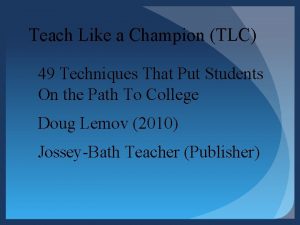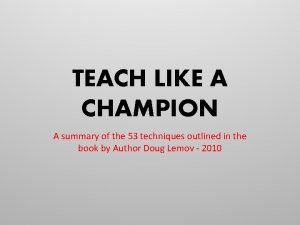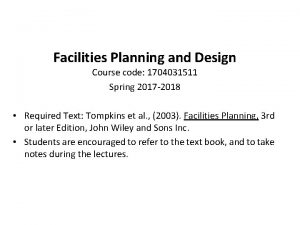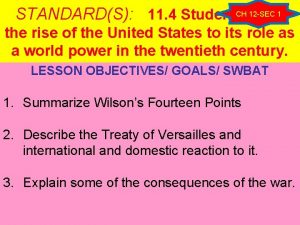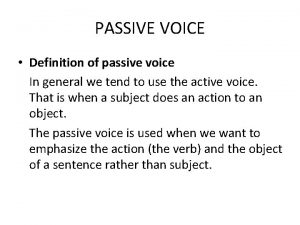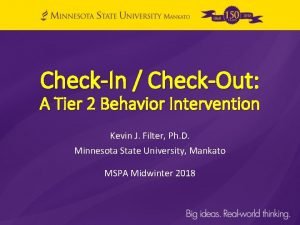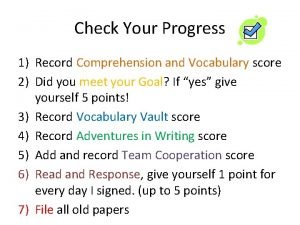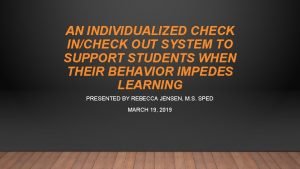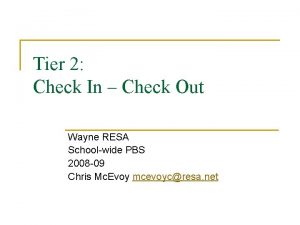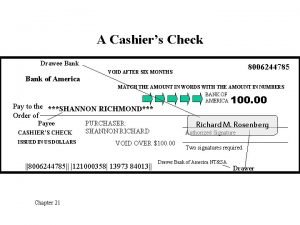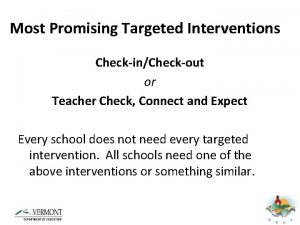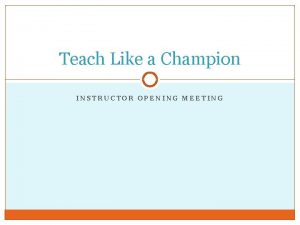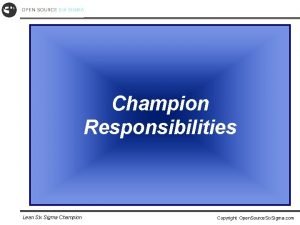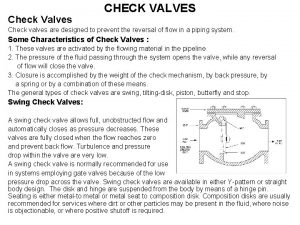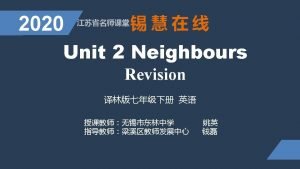Teach Like a Champion Check for Understanding Reject




























- Slides: 28

Teach Like a Champion Check for Understanding: Reject Self Report, Targeted Questioning & Standardize the Format

We are Performers

We Are Sometimes Great

And Sometimes Not

This is the Difference

Do Now- Reflection #1 (40 sec) Most likely you drive multiple times every day. You ought to be fantastic! But if you’re like most people you constantly make simple, avoidable errors. You stopped improving soon after you started. Why? Why don’t you get better at driving if you spend so much time doing it?

Repetition vs. Practice • • Attentiveness Intentionality Quality Feedback A Model of What “Better” Looks Like

Check for Understanding in Practice Key Idea: Effective Check for Understanding = Gathering data constantly and in real-time, then acting on it promptly. Two Methods for Gathering Data: 1. Via Questioning 2. Via Observation

Good Drivers

Reject Self-Report

Reject Self Report Replacing rhetorical questions with more objective assessment. WHY? ? ? • Students almost always say they understand when, particularry in groups. • Students don’t know they’ve missed something because they’ve missed it! • They think they understand when they actually don’t.

Weeding Out Self-Report Rhetorical Questons *Avoid the pitfall of asking yes or no questions. *Avoid phrases like “Does everybody understand? ” Or “Got it!”

Reject Self-Report: Rhetorical Questions Example: “A ‘Regular Polygon’ is a two-dimensional shape with sides that are all equal and angles that are Got it? ” all equal. Let’s talk about regular polygons. • Remind me, what do we know about the sides of a regular polygon? Tammy. • What about the angles, Robert? • There’s one thing missing from that definition. (Hold up a box of tissues) Is this box a regular polygon? Why or why not? Alicia. • Let’s apply this. Give me one example of a

Reflection # 2 - Why We See, But Don’t Act (45 sec) We sometimes recognize lack of mastery but fail to act on it. Reflect on what makes us likely to keep going even when some students don’t get it?

Targeted Questioning

Targeted Questioning *A quick series of carefully chosen open-ended questions *Directed at a strategic sample of the class * Executed in a short period of time

Video Clip-16 Think about what’s effective about the questioning in this clip.

Targeted Questioning: Stretch It- Making a habit of asking follow up questions to successful answers.

Higher Quality Questioning Data Think of Answers as Data Sets Tabulate and track answers: Use statistical sampling. Ex. Sample two typically low-performing students, two middle students, and one high flyer. This gives you a more accurate data set than simply accepting the first correct answer.

Higher Quality Questioning Data Test for Reliability Plan for Validity Any right answer always poses ther risk of being a false positvie - a lucky guess! Ask follow-up “why” and “how” Align questions to the rigor and format of what your students will ultimately be accountable for.

Reflection # 3 (40 sec) • Remember for most teachers, asking questions with percision and efficiency requires thinking of them in advance. • Reflect on times throughout the day and in your lessons when you could structure more targeted questioning.

Show Me

Video Clips 1 & 7 Think about how the two “Show Me” techniques are useful when checking for understanding?

Show Me • Fist to 5 - On average, how proficient are you with using the two examples of Show me in your own teaching practice? Rock Paper Scissors- Ex. Rock-Proficient, Scissors- in-beteen , Paper- Needs additional help

Show Me Mini-Practice (2 min ) *Work in groups of 3 *Two roles which will rotate around your group 1 Teacher 2 Students *Teacher asks CFU question, signals for student responses, (Rock Paper Sissors, Fist to 5, or another variation) teacher scans to gather data. *Group members provide feedback

Show Me White Boards

Video Clip # 6 -Affirmative Checking Affirmative checking Get sign off; then go on. Purpose #1: To ensure mastery before going on to more complex work. Prupose # 2 - To gather data on how your students are doing.

Exit Ticket- Post It Share a technique you will strive to utilize more frequently in your classrooms this year.
 Teach like a champion book summary
Teach like a champion book summary Etetp
Etetp Stretch it teach like a champion
Stretch it teach like a champion Teach like a champion summary
Teach like a champion summary Why does juana reject kino’s plan to separate?
Why does juana reject kino’s plan to separate? Null and alternative hypothesis examples
Null and alternative hypothesis examples Why does willy reject charley’s job offer
Why does willy reject charley’s job offer Reject allowance problem facilities planning
Reject allowance problem facilities planning Tuhan menolak persembahan kain karena
Tuhan menolak persembahan kain karena Why did the allies reject wilson's peace plan
Why did the allies reject wilson's peace plan When to reject null hypothesis critical value
When to reject null hypothesis critical value The professor told him not to talk in class passive voice
The professor told him not to talk in class passive voice It is not you they are rejecting but me
It is not you they are rejecting but me An item with positive discrimination power must be retained
An item with positive discrimination power must be retained Revise and resubmit letter example
Revise and resubmit letter example Let's check your understanding
Let's check your understanding Raster scan line in computer graphics
Raster scan line in computer graphics Cash control system
Cash control system Check in check out
Check in check out Check in checkout
Check in checkout Check your progress 1
Check your progress 1 Check in check out system
Check in check out system Check-in/check-out intervention template
Check-in/check-out intervention template Behavior check in check out sheet
Behavior check in check out sheet Jobbank
Jobbank Collision forces quick check
Collision forces quick check Check in check out forms
Check in check out forms Champion of the common man
Champion of the common man Infection control champion
Infection control champion
